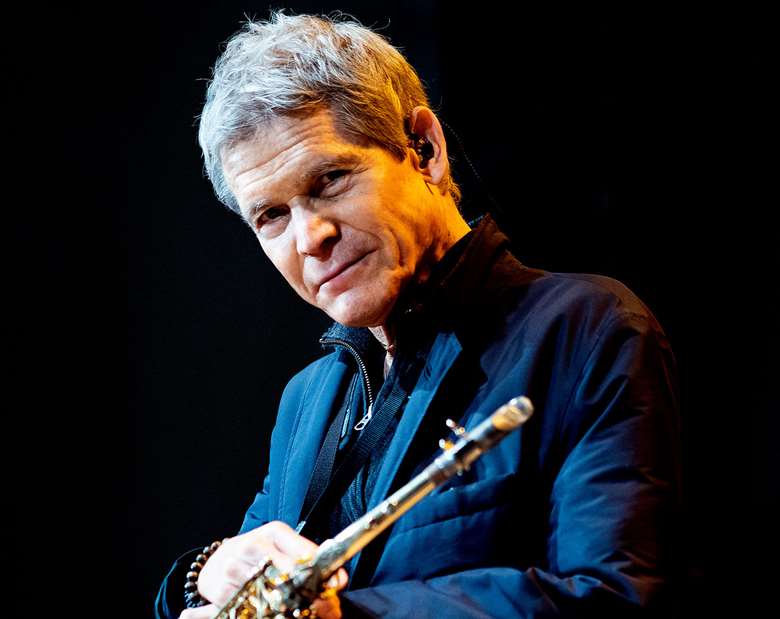David Sanborn: 30/7/1945-12/5/2024
Alyn Shipton
Tuesday, May 14, 2024
Alyn Shipton pays tribute to the revered saxophonist, solo artist, session ace and star sideman who has died age 78

Despite having one of the most immediately recognizable alto saxophone sounds in jazz, David Sanborn always played down the idea of having a ‘signature sound’. Although many writers have suggested Hank Crawford as a major influence, which he was, Sanborn also studied with tenorist J. R. Monterose, but told me he was equally influenced by the Texas tenor of David ‘Fathead’ Newman and the phrasing and attack of fellow altoist Phil Woods.
Initially taking up the saxophone to strengthen his lungs after an attack of polio, he quickly became stunningly proficient on the instrument. By his mid-teens he was playing with blues musicians including Albert King, and at the age of 22 he joined the Butterfield Blues Band. But blues (and soul) were not his only interests. Born in Florida, with a childhood in Kirkwood Missouri, he settled in St. Louis, and regarded that as his home city. Hence he was inexorably drawn into the avant-garde jazz scene there, and hung out with Lester Bowie, Roscoe Mitchell and Henry Threadgill. He was to acknowledge Lester as a major influence on his 1991 album Upfront, and was a principal collaborator on Tim Berne’s tribute to Hemphill, Diminutive Mysteries, a couple of years later.
Sanborn was interested in a huge breadth of music, way beyond the simplistic categorization of his work as ‘smooth jazz’ or ‘easy listening’. He told me that when he first came to New York in the early 1970s, as well as the Butterfield band he was working with both Gil Evans and David Bowie, as well as touring and recording with Stevie Wonder. In 1975, he joined the Brecker Brothers, and recalled, “that’s how I made a living,” while he began to launch his own career. At that time Mo Ostin at Warner Brothers was looking to expand his catalogue of musicians who straddled jazz, rock, and blues. He had recently signed Miroslav Vitous and Al Jarreau, and at the suggestion of the Butterfield Blues Band’s singer and producer John Court, he signed Sanborn for his 1975 debut album as a leader, Takin’ Off. As a consequence, in between a variety of freelance work with others, Sanborn started touring his own bands, and forging a long-term relationship with Marcus Miller as both bass player and producer.
This was the first of 25 albums (including six Grammy winners) to appear under his own name over the next 40 years, including Hideaway on which he played Fender Rhodes as well as alto, the acoustic sessions on Another Hand (on Elektra Musician), the collaboration with Johnny Mandel and a string orchestra on Pearls, the nods to South African jazz on Closer (on Verve), and an affectionate look back to Gil Evans on the Decca album Here and Gone from 2008, on which his long-term associate Gil Goldstein reworked Gil’s chart for ‘St Louis Blues’ from New Bottle Old Wine.
He was a frequent visitor to Britain, one particularly memorable concert being his 2011 London Jazz Festival show, featuring his trio with organist Joey De Francesco, playing music from their album Only Everything. (A particular favourite of Sanborn’s on that disc was the title number, a dedication to his grand-daughter Genevieve.) The issued track, at the suggestion of producer Phil Ramone, was the first run-through, which has plenty of edge and excitement. The last time I saw David was one of his last UK visits, at the 2019 Cheltenham Jazz Festival, where, as ever, he combined his signature sound with new ideas. Although he had already been diagnosed with cancer by that time, it did not stop him presenting masterclasses and duo concerts over Zoom during the pandemic, drawing on another element of his career as an admirable broadcaster, notably on his long-running syndicated PBS radio programme The Jazz Show.


